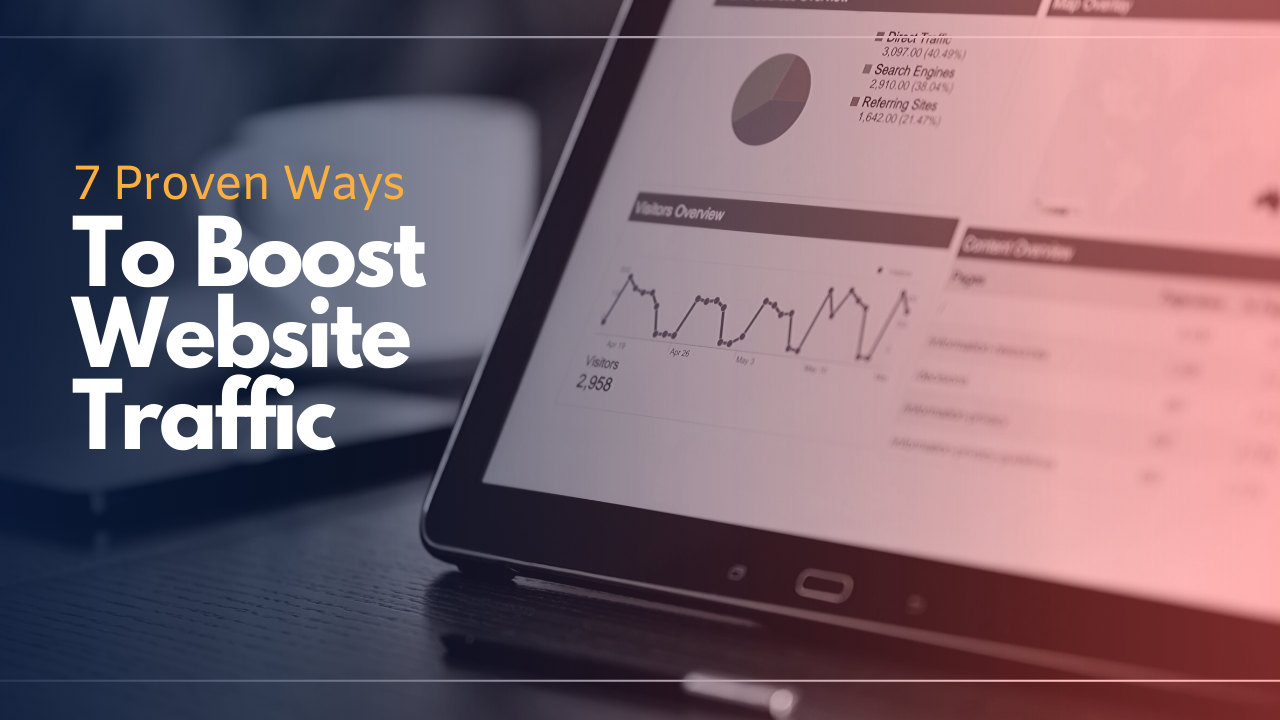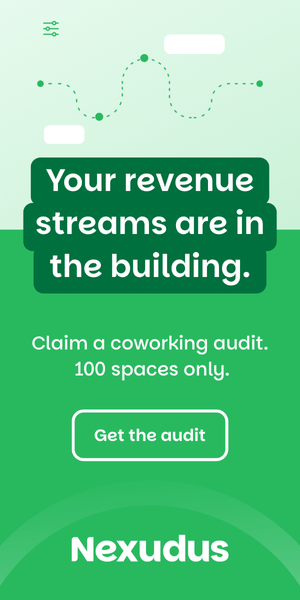- Search Engine Optimization (SEO) can help businesses increase their website traffic.
- The more traffic a website has, the more leads a company is likely to capture and close.
- Some strategies to boost website traffic include link-building, on-page SEO, and making strategic use of keywords.
This article was written by Sergey Aliokhin, Community Outreach Manager at Visme.
Every business today should have a website. Ideally, your business should have a high-traffic website. The reason for this is that the more traffic your website has, the more leads you are likely to capture and close.
However, figuring out how to increase your website traffic can be challenging, especially if you are not familiar with current website optimization strategies. You’re not alone. In fact, many professionals struggle with fully understanding the complicated and ever-changing realm of Search Engine Optimization (SEO).
While some companies have the budget and resources to hire professional help, many small businesses often lack the budget to hire and expert or consultant to help them nail down SEO efforts. If you’re one of the latter, this guide is for you.
7 Steps to Boost Website Traffic
1. Analyze What Your Target Audience Searches on Google
There are dozens of SEO tutorials on the web and they suggest different methods of ranking your website on the first page of SERP (search engine results pages).
If you have just decided to dig into SEO, your brain might be shocked by the information you absorb.
Likely, the first aspect of SEO that you must understand is how your target audience searches the service or product you offer. If you don’t know those magic queries (keywords) people use to find what they need, you won’t be able to optimize your website correctly.
The best advice would be to think just like your potential customers do. What queries would you use to find the service or product you sell?
Let’s say you own a coworking space in Chicago. You want more people to find out about your coworking space from SERP. Now, brainstorm what possible keywords would come to people’s mind to search a coworking space:
- Coworking space in Chicago
- Coworking space Chicago
- Coworking space near me
- Free coworking space Chicago
- Etc.
Moreover, Google has other search suggestions that you can take into account as well:

If you want to get more keyword ideas, you can use the “Search suggestions” report from the Keywords Explorer tool:

2. A Few Important Metrics to Review
Did you know that every keyword has some stats behind it?
These stats are critically important to drive more traffic to your website. The Keywords Explorer tool can suggest a few metrics you must draw your attention to, including “Search volume”, “Keyword difficulty”, “Clicks”, and “CPC (cost per click)”.

What do these metrics mean?
- Search volume shows the average monthly number of searches for the keyword in the selected country.
- Keyword difficulty estimates how hard it will be to rank in the top 10 organic search results for a given keyword in a given location.
- Clicks refer to the average monthly number of clicks on the search results that people make while searching for the target keyword.
- CPC shows the average price that advertisers pay for a click on their ad in paid search results for a target keyword in a given country.
By exploring these metrics you will have a clear idea of how a certain keyword performs. Nevertheless, since we’re talking about the ways to generate traffic, you must know what topics and words are most likely to draw a click from your target audience.
3. How Your Topic Interacts with a Target Audience
Content serves as a source of traffic to your website. Hence, it is your priority to create high-quality unique content that will attract people to the site.
Your first step should be exploring the topic ideas that will resonate with your readers.
One effective way to find these topics is discovering ideas through the Content Explorer tool:

Here you can sort the results by the highest number of organic traffic and borrow the topics from the list.
Another good way to spot topic ideas is by visiting Quora. Just type a query related to your niche and reap the benefits:

Skim through the list of questions and come up with a couple of great ideas. For example, “Top 5 Best Coworking Spaces You Should Visit in Chicago.”
You can do the same activities on Reddit and other niche related forums.
4. The Importance of Keyword Intent
Keyword intent aims to represent a user’s purpose for the search. It helps understand an approximate intent a person has when typing a keyword in Google.
There are three types of keyword intent:
- Informational – e.g “coworking spaces with free wi-fi near me”
- Navigational – e.g “coworking spaces in Chicago”
- Transactional – e.g “Chicago book coworking space”
If you can predict user behavior, you will be able to focus on the right keywords in your SEO strategy. Keep in mind that search engines always try to suggest users those results that will best match their queries.
5. On-Page Optimization of the Pages
If your focus is getting more traffic to your website, you must optimize all the pages for the search engines. In other words, you must do some on-page SEO activities.
These activities include optimizing of:
- URL structure
- Meta title/description
- Content and its structure
- Images
- Implement internal linking
6. Take Care of Site Accessibility
SEO efficiency refers to how accessible your website is for both people and crawlers. The hard part of this optimization step is that it requires some technical SEO knowledge.
It is often recommended to hire a technical SEO expert to help you along these steps. However, if that is not an option for you at the moment, here are a few basics you need to understand.
- Robot.txt is a file that allows search engine crawlers to know which pages of the website should be crawled and which not. Plus, it helps crawlers find the exact pages on your website and index them.
- Sitemap is a file that shows the connection between the pages on your website that search bots crawl.
- Speed of the site is important. You must realize that if it takes more than 3 seconds for your website to download some page, 40% of users won’t wait around for it and will leave before it fully loads.
7. Link-Building
Link-building is an SEO direction that helps you grow traffic and make your website backlink profile stronger.
I am going to suggest three powerful link-building strategies that will help you earn more links and increase traffic.
1. Outreach
Email outreach might be called a “tool” that serves to help you build a business relationship with potential partners. From a marketing standpoint, outreach allows you to promote content and build some links.
Let’s review how to do outreach briefly:
- Go to Google and type a query related to the topic of the post you have just published on your blog. For instance, “coworking space tips”:

When the competitive pieces of content have been found, it is time to see what domains refer to them. “Referring domains” report from Ahrefs will help you:

In this report, you should explore how many backlinks to the target each domain has. Afterwards, investigate these links and see if it is worth it for you to reach out to them.
- Find email addresses of the potential outreach targets. I suggest you use tools like Aeroleads, ContactOut, Voilanorbert, and Find.that Email.
- Prepare personalized email templates and track outreach campaigns with Buzzstream.
2. Guest post contribution
This way of building links and generating traffic is the most trustworthy. In a nutshell, you offer high-quality informative content and get a backlink to your website in return. Moreover, it is an awesome practice to link to other topic related sources within your content. Google appreciates it.
I encourage you to target the websites that have high domain rating and are related to your niche. Notwithstanding this fact, you can always write for other less powerful websites as well. The more links you acquire, the better for your SEO.
3. Turn unlinked mentions of your brand into links
I am sure you’ve stumbled upon the mentions of your website or service and there was no backlink to your resource. There is no sense to search such unlinked mentions manually. It is too time-consuming. Instead, Content Explorer from Ahrefs can do this for you:

You must use the following search formula “brand name” -site:domain.com. The report suggests you the list of all pages that are related to this query. By applying “highlight unlinked domains” option you will see those web-pages that don’t have a link back to your website. Once the opportunities are found, you should pitch the website owner or editor of the blog to include a backlink.
These link-building techniques work like a charm. Don’t hesitate to make them a part of your SEO efforts.
To Sum Up
Traffic equals leads. Leads convert into paid customers. The chain looks pretty simple.
However, traffic growth is not easy-peasy. The purpose of this guide is to show seven actionable ways that would help you succeed in SEO and grow traffic to your site.
Sergey Aliokhin is a Community Outreach Manager at Visme. When he is out of work, he likes to spend his time with family, read books on science-fiction, practice playing the bass, and visit the gym.


 Dr. Gleb Tsipursky – The Office Whisperer
Dr. Gleb Tsipursky – The Office Whisperer Nirit Cohen – WorkFutures
Nirit Cohen – WorkFutures Angela Howard – Culture Expert
Angela Howard – Culture Expert Drew Jones – Design & Innovation
Drew Jones – Design & Innovation Jonathan Price – CRE & Flex Expert
Jonathan Price – CRE & Flex Expert














